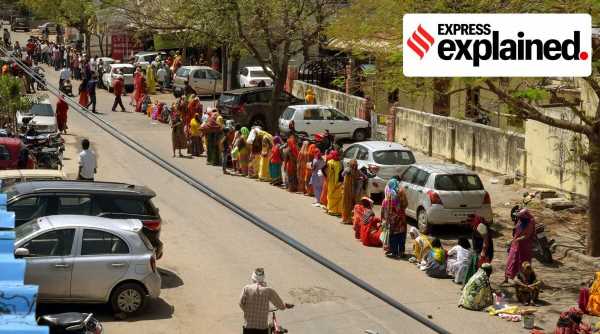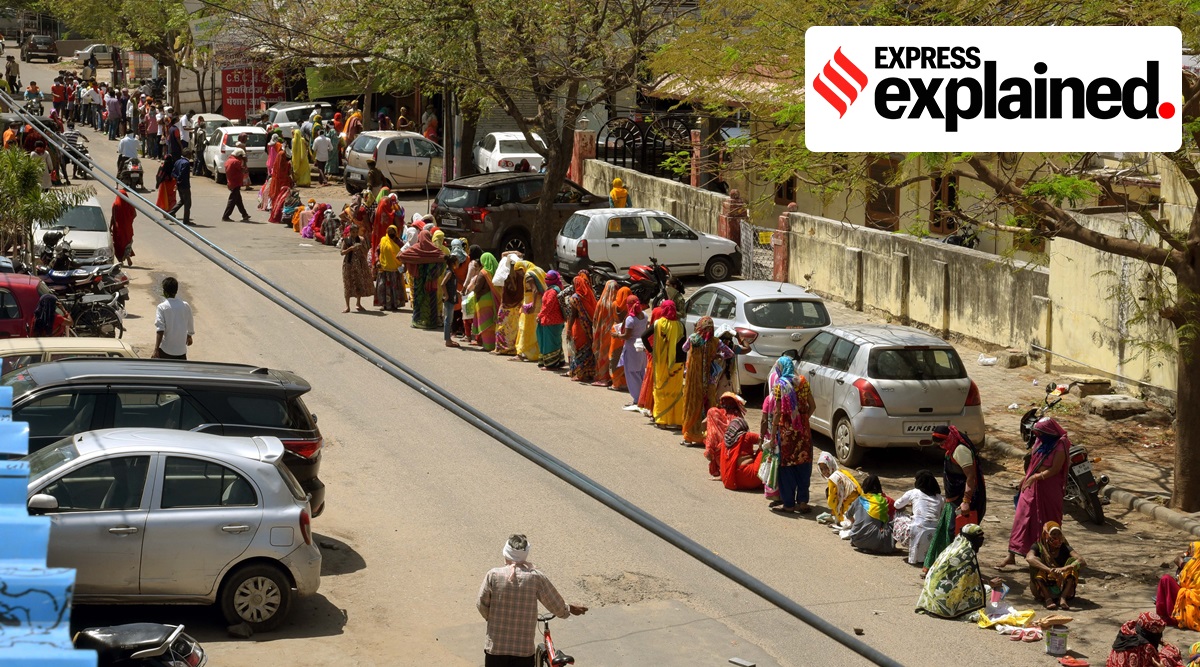The NITI Aayog recently circulated a discussion paper on a proposed revision in the National Food Security Act (NFSA), 2013. A look at the move and its implications.
The NITI Aayog recently circulated a discussion paper on a proposed revision in the National Food Security Act (NFSA), 2013. A look at the move and its implications:
Why a discussion on a revision?
The NFSA provides a legal right to persons belonging to “eligible households” to receive foodgrains at subsidised price– rice at Rs 3/kg, wheat at Rs 2/kg and coarse grain at Rs 1/kg — under the Targeted Public Distribution System (TPDS). These are called central issue prices (CIPs). A revision of CIPs is one of the issues that have been discussed. The other issues are updating of the population coverage under the NFSA, and beneficiary identification criteria.
Under sub-section (1) of Section 3 of the Act, the term “eligible households” comprises two categories — “priority households”, and families covered by the Antyodaya Anna Yojana (AAY). Priority households are entitled to receive 5 kg of foodgrains per person per month, whereas AAY households are entitled to 35 kg per month at the same prices.
For how long are these prices valid, an how are they to be revised?
Under Schedule-I of the Act, these subsidised prices were fixed for “a period of three years from the date of commencement of the Act”. While different states began implementing the Act at different dates, the deemed date of its coming into effect is July 5, 2013, and the three-year period was therefore completed on July 5, 2016.
However, the government has yet not revised the subsidised prices. The government can do so under Schedule-I of the Act, after completion of the three-year period. To revise the prices, the government can amend Schedule-I through a notification, a copy of which has to be laid before each House of Parliament as soon as possible after it is issued.
Even the Economic Survey of 2020-21 had recommended a revision in the CIPs.
The revised prices cannot exceed the minimum support price for wheat and coarse grains, and the derived minimum support price for rice.
What is the extent of coverage, and how is it to be updated?
The Act has prescribed the coverage under “eligible households” — 75% of the rural population and up to 50% of the urban population. On the basis of Census 2011 figures and the national rural and urban coverage ratios, 81.35 crore persons are covered under NFSA currently. This overall figure has been divided among the states and Union Territories, based on the NSSO Household Consumer Expenditure Survey 2011-12.
Section 9 of the Act deals with an update of coverage of population under the Act. It states: “The percentage coverage under the Targeted Public Distribution System in rural and urban areas for each State shall, subject to sub-section (2) of section 3, be determined by the Central Government and the total number of persons to be covered in such rural and urban areas of the State shall be calculated on the basis of the population estimates as per the census of which the relevant figures have been published.”
Thus, the number of NFSA beneficiaries was frozen in 2013. However, given the population increase since then, there have been demands from the states and union territories to update the list by ensuring an annual updating system under NFSA, sources said.
It was in this context that the Ministry of Consumer Affairs, Food and Public Distribution had asked the NITI Aayog to suggest an alternative methodology for “covering beneficiaries under NFSA, including prospective beneficiaries”.
What has the NITI Aayog proposed?
In its discussion paper, the NITI Aayog has suggested that the national rural and urban coverage ratio be reduced from the existing 75-50 to 60-40. if this reduction happens, the number of beneficiaries under the NFSA will drop to 71.62 crore (on the basis of the projected population in 2020).
To make these changes in the law, the government will have to amend sub-section (2) of Section 3 of the NFSA. For this, it will require parliamentary approval.
Besides the Food Ministry and the NITI Aayog, discussions on the proposed revisions include the Chief Economic Adviser and top officers of the Ministry of Statistics and Programme Implementation. According to sources, several meetings have been held under the chairmanship of Prof Ramesh Chand, Member, NITI Aayog, to review the population coverage criterion.
What is the implication of the revision for the Centre and the states?
If the national coverage ratio is revised downward, the Centre can save up to Rs 47,229 crore (as estimated by the NITI Aayog paper). However, the move may be opposed by some of the states.
On the other hand, if the rural-urban coverage ratio remains at 75-50, then the total number of people covered will increase from the existing 81.35 crore to 89.52 crore —an increase of 8.17 crore. This estimate by the NITI Aayog is based on the projected 2020 population, and, according to the paper, will result in an additional subsidy requirement of Rs 14,800 crore.
Source: Read Full Article




